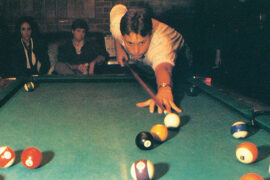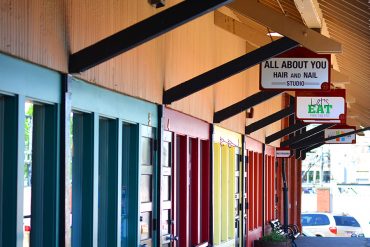The designated driver never had it so good.
By Matthew DeBord
HQ 124 | WINTER 2024
Wine lovers have probably never had it better: the range of wines from around the world that can be obtained at wineries, wine stores and online is staggeringly broad. Red wines from Portugal? Check. White wines from South Africa? No problem. Wines from California and Australia? Just head to almost any grocery store and you’re good to go.
Alongside this bounty, in the past decade, a new product has emerged: wines for people who don’t drink alcohol. For the record, nonalcoholic or alcohol-free beverages have been around in Europe for some time, typically beers, and almost everybody has spotted a few bottles of O’Doul’s at a summer barbecue. In my experience, these drinks are totally serviceable — they taste like beer and are usually quite refreshing. For nondrinkers, they offer an alternative to sipping soda, sparkling water, juices or other alcohol alternatives.
Wine had been excluded from this category because it was assumed that wine drinkers wouldn’t want to consume anything that didn’t taste like, well, wine. Alcohol is an integral part of the wine-tasting experience, lending a sense of definition, scale and fullness to the drink. In the winemaking process, the level of alcohol in the actual wine is a result of the ripeness of the grapes used to make the wine and the management of the fermentation process. Some laser-focused Rieslings from Germany will be relatively low-alcohol, between 9 and 10%, while at the other end of the spectrum, a gargantuan California Zinfandel could push 20%.
That said, several winemakers have experimented successfully with marketing nonalcoholic wines, which would be more accurately described as “de-alcoholized” — the wine has the alcohol removed after being finished. There are a variety of techniques, resulting in wines that have either marginal levels of alcohol — less than 1% — or low levels that are around 1%. Basically, a decent-quality wine is first produced, then the alcohol is removed, and finally the wine is reassembled and adjusted with additives to taste good.
Some wine lovers ask the obvious question: Why bother? If you don’t want to drink alcohol, then …don’t drink alcohol! As a frequent consumer of NA beverages, I beg to differ. There are plenty of times when drinking alcohol is a bad idea, and it’s nice to have options if you don’t feel like substituting lemonade or seltzer. Some people have also given up alcohol but still enjoy the taste of wine and beer.
So, what’s a good place to start? An easy-to-find brand that makes recognized wines such as Merlot and Chardonnay is Fre, produced by a big California wine company, Trinchero Family Estates. I’ll pick up a bottle at the grocery store every once in a while, and use the Chardonnay to make spritzers and the Merlot to make a sort of personal mocktail with lime juice and tonic. The wines themselves are a bit simple, with the whites outdoing the reds. The rose is a tasty choice that is ideal for summertime quaffing. These bottles are usually priced around $15.
Spend a little more, around $20-$25, and you can move on to one of my faves — Ariel Cabernet Sauvignon. This wine hails from the Central Coast of California and comes very close to tasting like a proper red wine. It’s full-bodied, with some excellent texture and even some pleasant aromas, a quality that often suffers from the de-alcoholization process.
One libation that takes to the nonalcoholic game almost naturally is sparkling wine. This is because sparkling wines, including Champagne, are often supplemented with some sugar after the fermentation process, diminishing the alcoholic burn in a wine that’s already relatively low-alcohol. When it comes to sparklers, much of the fun of drinking Champagne, Prosecco or Cava is retained even when the booze is taken out. A fine one to sample is Thomas & Scott Noughty, an NA sparkling Chardonnay that goes for $25. It’s crisp, fizzy and flavorful, and an ideal option for those New Year’s Eve toasts when you have to drive back home after midnight.
What about pairing food with nonalcoholic wines? This is trickier than one might think, and the alcohol in a powerful red from California or France helps to cut through the fat and richness of things like steak, duck, lamb and other heavy proteins. My view is that nonalcoholic wines taste best when paired with simple, lighter fare, such as pasta dishes, risotto, grilled chicken, fish and Asian cuisine. In particular, sparkling nonalcoholic wine makes a delightful accompaniment to Chinese takeout, Thai food, sushi and even some soups, including ramen!
In the end, drinking nonalcoholic wines entails some compromises — they are never going to taste quite like their alcoholized forebearers — but from my perspective, this is an acceptable tradeoff. NA wines absolutely do not taste like glorified grape juice, and they provide a much-needed alternative as lots of people re-examine their attitudes toward drinking, become more health-conscious or simply want to enjoy some wine when they have a responsibility to remain sober. The designated driver never had it so good!





